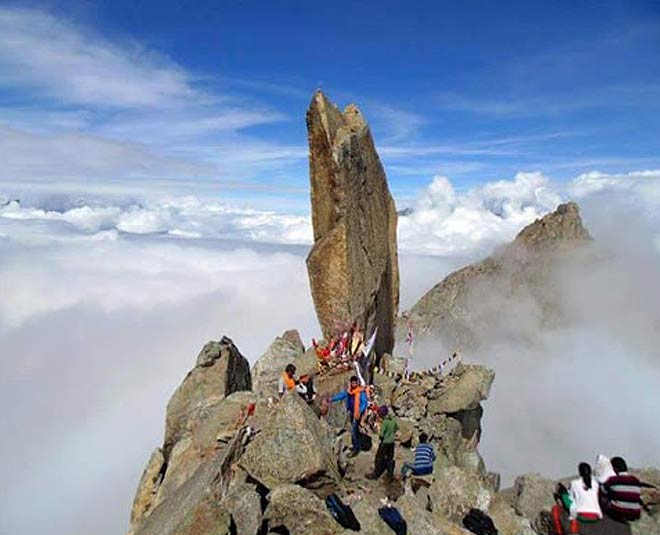There comes a point in many seekers’ lives when the pull of the divine becomes too strong to ignore. The pristine high-altitude valleys of Uttarakhand, with their ancient temples, snow-clad peaks and flowing rivers, offer one such path. For those with limited time but unwavering devotion, a journey focusing on two of the most revered abodes can fulfill the heart’s longing and leave a lasting imprint on the soul.
Why Choose a Two-Shrine Pilgrimage?
In the vast panorama of Himalayan pilgrimages, the full circuit may span several days and cover many sites. Yet if time, stamina or other commitments are limiting factors, a more concentrated pilgrimage to two of the sacred shrines offers a meaningful alternative. This route allows devotees to draw close to both tradition and nature, to take in powerful symbolism, without the extended travel or higher physical strain of a longer trip. Such a pilgrimage brings together spiritual depth, scenic beauty and practical convenience—creating a powerful, transformative experience.
What the Package Looks Like
The typical itinerary for a two-temple expedition begins with arrival in the foothills of Uttarakhand. From a base like Haridwar/Rishikesh, one drives up into the Garhwal Himalayas, winding through mountain roads, deep valleys and forested slopes. The journey then nudges higher—past alpine stretches and crisp mountain air—culminating in visits to the first shrine. After overnight stay and ritual, travel continues to the second destination, concluding with descent to the plains and return. Such a structured journey is often offered as a full‐service “Do Dham Yatra package” by travel operators, including transport, accommodation, guide/assistance, and temple darshan arrangements. On the one hand it is rooted in sacred tradition; on the other, it is made accessible through modern logistics.
The Two Pillars of This Path
Although routes can vary, the canonical two-shrine pilgrimage refers to the revered temples of Kedarnath and Badrinath. Kedarnath stands high in the Mandakini valley, dedicated to Lord Shiva; its atmosphere is rugged, remote, majestic. Badrinath, nestled beside the Alaknanda river, is dedicated to Lord Vishnu and brings elements of solemnity, serenity and grandeur. Visiting both offers a spiritual balance of worship, reflection and natural awe.
Key Inclusions You Should Look For
When selecting a “Do Dham Yatra package”, pay attention to the following:
- Transport & route logistics: Mountain drives can be long and winding; some packages even include helicopter options for faster access.
- Accommodation and meals: The journey passes remote regions—comfortable lodging and proper meals make a big difference.
- Temple darshan arrangements: Crowd management, priority darshan and guidance at the temples help the spiritual experience flow smoothly.
- Physical/health preparation: High altitudes and steep gradients demand fitness, acclimatisation and necessary safeguards. Some operators provide medical backup or briefings.
- Weather/rescue contingencies: In the Himalayas weather can change rapidly; a package that includes alternatives or priority services is more reliable.
- Duration & pace: Depending on your time, you may opt for a longer stay or a compact version. A well-planned itinerary balances devotion and comfort.
Sample Itinerary Overview
Here is a sample flow of a five-to-six-day two-shrine pilgrimage:
- Arrival at base town (Haridwar/Rishikesh) → transfer and orientation.
- Drive towards Kedarnath region; overnight stay en route.
- Visit Kedarnath temple early morning, darshan + rituals, then rest.
- Journey onward to Badrinath area; overnight stay.
- Morning darshan at Badrinath; time for meditation, riverbank walk, local sightseeing.
- Drive back down, return to base town and departure.
This kind of itinerary (road route) is commonly offered and well-suited for families and groups. southerntravelsindia.com+1
Who Should Choose It?
- Individuals or groups with limited time but strong spiritual intent.
- Elderly devotees or families for whom a shorter, less gruelling route is preferable.
- First-time pilgrims who wish to have a meaningful experience without committing to a very long journey.
- Travellers who appreciate nature, mountain vistas and temple architecture, along with devotion.
Things to Keep in Mind Before You Depart
- Fitness & altitude: Even if the drive is smooth, mountain air is thin and exertion should be moderate. Carry basic medicines, consult your doctor if needed.
- Weather & season: The temples open and close based on seasonal conditions (snow, landslides). Make sure your travel window is confirmed.
- Packing: Warm clothing, good shoes, rain cover, basic first-aid, limited luggage (especially for helicopter options) are wise.
- Time-management: Some packages may rush the temple visits. Prioritise darshan, ritual and quiet time—don’t make it feel like a checklist.
- Devotional mindset: While logistics matter, the core of this journey is spiritual reflection. Allow space for meditation, introspection, silence.
- Respect local customs: Temples in mountain regions follow strict protocols—dress modestly, follow offerings ethos, engage respectfully with priests and local people.
The Transformative Outcome
When you stand before one of these mountain shrines, perhaps in the mist, hear the temple bell resonate and sense the ancient stone beneath your feet, the journey within begins. The sheer scale of nature—the deep valleys, the white peaks, the flowing river—puts human life into perspective. The rituals, chants, the quiet dawns—all combine to open the heart. A well-chosen two-shrine pilgrimage lets you return not just with photographs or memories, but with renewed faith, clarity and inner peace.
Conclusion
In a world of endless tasks, deadlines and distractions, this pilgrimage offers a pause. A dedicated few days in the Himalayas, guided by intention, structure and devotion, can become a turning point. By selecting a thoughtfully arranged “Do Dham Yatra package” you give yourself the gift of a sacred experience—balanced between ease and challenge, grandeur and stillness, devotion and reflection.
Whether you seek the divine, the sublime beauty of the mountains, or a moment to reconnect with your inner self, this two-temple journey holds the promise of a meaningful transformation. Begin well, prepare thoughtfully, and travel with an open heart.





























